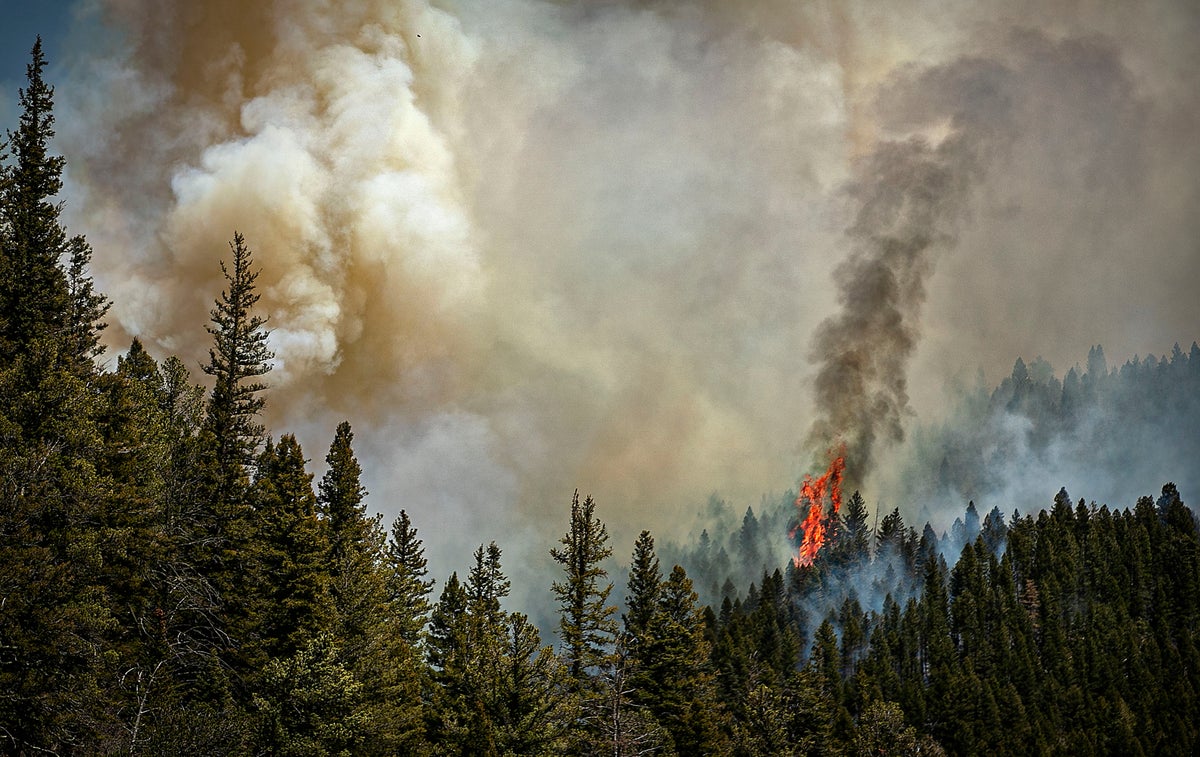
Two fires that merged to create the largest wildfire in New Mexico history have both been traced to prescribed burns set by U.S. forest managers as preventative measures, federal investigators announced Friday.
The findings could hold implications for the future use of prescribed fire to limit the buildup of dry vegetation amid a U.S. Forest Service moratorium on the practice. They also could affect complex deliberations concerning emergency aid and liability for a fire that has spread across 486 square miles (1,260 square kilometers) and destroyed hundreds of structures.
The two fires joined in April to form the massive blaze at the southern tip of the Rocky Mountains, in the Sangre de Cristo range.
One of the fires was previously traced to April 6, when a prescribed burn, set by firefighters to clear out small trees and brush that can fuel wildfires, was declared out of control.
On Friday, investigators said they had tracked the source of the second fire to the remnants of a prescribed winter fire that lay dormant through several snowstorms only to flare up again last month.
Investigators said the prescribed “pile burn” was initiated in January at Gallinas Canyon in the Santa Fe National Forest outside Las Vegas, New Mexico, and concluded in the final days of that month. Fire was reported again in the same vicinity on April 9 and escaped control 10 days later amid dry, hot and windy conditions, Forest Service investigators found.
Scientist and forest managers are racing to develop new tools to forecast the behavior of prescribed fires amid climate change and an enduring drought in the American West. Prescribed fires are aimed at limiting the accumulation of timber and underbrush that, if left unattended, can fuel extremely hot and destructive wildfires.
Gov. Michelle Lujan Grisham in a statement called the investigation results a "first step toward the federal government taking full responsibility" for the New Mexico wildfire. She highlighted her pending request to President Joe Biden to direct the Federal Emergency Management Administration to pay for 100% of costs related to a broad range of recovery efforts.
Forest Service Chief Randy Moore last week announced a 90-day pause and review of protocols for prescribed fires that limit the buildup of flammable vegetation that can lead to extremely hot and uncontrollable wildfire. He did not specifically link the review to fires in New Mexico.
“It will also ensure the prescribed burn program nationwide is anchored in the most contemporary science, policies, practices and decision-making processes, and that employees, partners and communities have the support they need to continue using this critical tool to confront the wildfire crisis,” the agency said in a statement Friday.
So-called pile burns can often include wildland debris collected over months or even years. Forest managers cut back trees and gather debris into mounds, preferring to burn forest fuels in the winter when prescribes burns are easier to control.
In January, Santa Fe National Forest workers started burning through a series of piles across an area of 0.6 square miles (1.5 square kilometers), after advising the public of possible smoke hazards.







